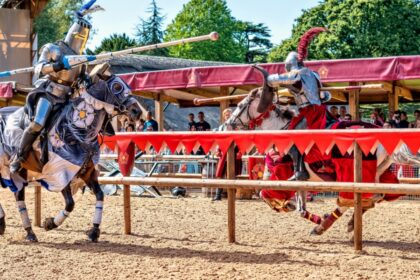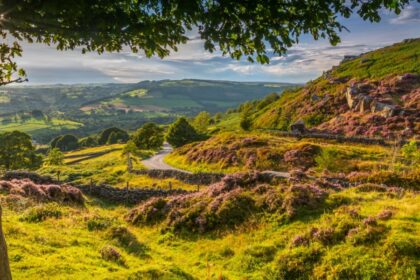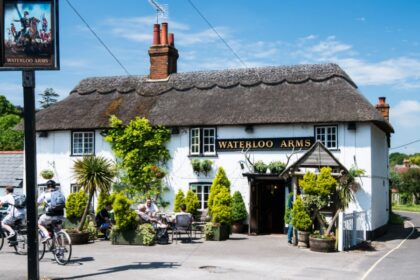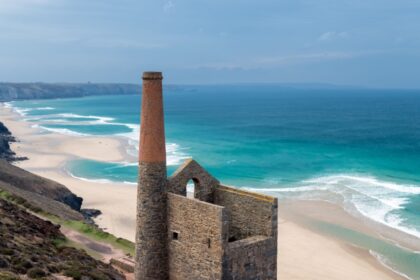There are some parts of Britain that seem to exist in a slightly different version of time. Not frozen exactly, but moving with an unhurried pace, as if the centuries had left a note saying “Back in five minutes” and never quite returned. The Cinque Ports are just such a place.
Cinque, by the way, is pronounced “sink,” which is odd considering it’s French, and even odder when you realise the thing it refers to is actually five towns, most of which aren’t ports anymore, and some of which aren’t even on the sea. But that’s Britain for you. The Cinque Ports (originally Hastings, New Romney, Hythe, Dover and Sandwich) were once the nation’s maritime big shots, supplying ships and sailors to the king in exchange for privileges like tax breaks, self-governance, and being generally smug about it.
They were our original seaside heavyweights, long before Brighton got its pier or Blackpool its tower. Today, their glory days have been eroded by time, tides, and quite a lot of silting. But poke about a bit and you’ll still find plenty of character, crumbling charm and moments of unexpected splendour.
Hastings and its battle-scarred beach
Let’s start with Hastings, which is the only one of the five to regularly appear in pub quizzes. It is, of course, synonymous with the Battle of Hastings in 1066, which didn’t actually happen in Hastings but rather in Battle, a few miles inland. Never mind.
Modern Hastings is a likeable muddle of old and new. The Old Town, squeezed between two steep hills, is where things get most interesting. There’s a jumble of half-timbered buildings, higgledy-piggledy lanes, and enough pubs to make you forget what century it is. The fishing fleet here is the largest beach-launched one in Europe, which sounds niche but is quite impressive once you see the colourful boats lined up on the shingle.
For visitors, there’s a cliff railway (because every proper British resort needs one), a smugglers’ cave (ditto), and the excellent Hastings Contemporary gallery perched right by the sea. You can stroll the promenade, rummage through antique shops, or climb up to the ruined castle for sweeping views and an overactive imagination.
New Romney and the mystery of the missing sea
Next up is New Romney, which is about as unportlike as a port can be, unless you count the model boats in the charity shop window. This is because the sea upped and left in the 13th century, following a couple of epic storms and a lot of silt. These days it’s three miles inland, and the town looks slightly confused by the whole situation.
Despite the retreating coastline, New Romney still has a quiet, sleepy charm. The church of St Nicholas is worth a nose around, not least because its door is now below street level thanks to all that medieval flooding. There’s also the Romney, Hythe and Dymchurch Railway, a delightfully dinky miniature train line that trundles through the marshes with a nostalgic whistle.
Don’t come expecting ice cream and donkeys. Come for the oddness, the sense of history and the feeling that the sea might just come sloshing back in one day out of sheer bloody-mindedness.
Hythe and its canal of corpses
Hythe is the prettiest of the lot, with a prim and proper high street that looks like it’s been dusted daily since 1840. It’s all antique shops, tearooms, and houses with names like “The Old Bakery” even though no one’s bought a loaf there since the Crimean War.
But Hythe has a secret. Creep into the ossuary at St Leonard’s Church and you’ll find a remarkable collection of bones. Over 2,000 skulls are stacked neatly along the walls, which feels both ghoulish and strangely reverent. No one knows quite why they’re there. Perhaps the town simply ran out of room for the departed and thought, “Let’s just keep the heads.”
There’s also a military canal running serenely through the town, built during the Napoleonic Wars in case of invasion. Nowadays it’s more likely to be invaded by ducks and dog walkers, but it adds a lovely, leafy calm to the place.
Dover and its chalky showstopper
Dover is a name that rings with significance, and for good reason. The White Cliffs alone are enough to stir the soul, even if you’re the sort of person who finds soul-stirring slightly embarrassing. They rise from the sea with theatrical flair, bold and brilliant and entirely unapologetic about their role as national symbol.
But there’s more here than a dramatic coastline. Dover Castle is a proper bruiser of a fortress, with layer upon layer of history from the Romans to the Cold War. You can explore medieval tunnels, peer into wartime command posts and emerge blinking into the present like you’ve just binge-watched a thousand years.
The town itself is a bit more work. It’s had some rough patches and doesn’t always show its best face straight away. But persevere and you’ll find some good places to eat, a decent museum, and that peculiar feeling you get when standing at the edge of something vast and salt-scented.
Sandwich and the town that named lunch
Sandwich is a marvel. A perfectly preserved medieval town where the streets are so narrow they probably count as footpaths. It’s quaint, yes, but not in the cloying way that some places can be. There’s a dry wit about the place, a kind of Tudor sarcasm built into the beams.
It also has the best name, obviously. And yes, this is the sandwich that gave the sandwich its name. The story goes that the 4th Earl of Sandwich liked to eat meat between slices of bread so he wouldn’t have to stop gambling. Whether this makes him a culinary genius or a lazy aristocrat is up to you.
There are Roman walls to wander, crooked houses to peer at, and a golf course so famous it sounds like a royal title – Royal St George’s. Visitors can explore the Guildhall Museum, stroll along the River Stour, or simply sit in a pub with a pint and ponder how the sea used to lap at the town’s doorstep.
A string of stories stitched by the tide
The Cinque Ports are not what they once were. They’re no longer strategic linchpins or centres of commerce. Some are no longer even coastal. But they remain fascinating, eccentric and defiantly British – clinging to their histories like barnacles on the side of an old boat.
If you’re the kind of traveller who prefers atmosphere to attractions, who doesn’t mind a bit of drizzle and loves a good local yarn, then you’ll find a lot to love in these stubbornly characterful towns.
And should you tire of castles, canals and crumbling churches, there’s always the simple pleasure of saying “Cinque” like a local and quietly correcting anyone who gets it wrong.





